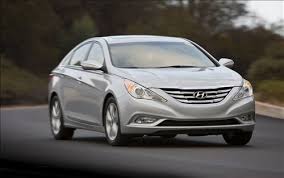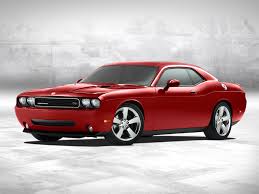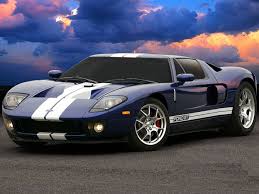New Cars Wallpapers Biography
Millions of people wake up in the morning, grab a cup of coffee and drive off to work, without stopping to think, 'how does my car work'? Most of the time, that question comes as, 'why doesn't my car work?' The way to stay informed is to read up on the subject, which is the point of this hub. American life would not be the same without cars, so it is a good idea to be somewhat knowledgeable on how that which we hold so dear works.
There are many different systems in cars, but they can be broken down into 7 sub systems. Those systems are steering, suspension, drive train, emissions, brakes, electronics, and safety. These can also be broken up into smaller sub systems, and i will go into greater detail with later posts. This is part one: Steering and Suspension
Lets start with steering, the system that allows your vehicle to turn. It consists of many parts, which vary depending on what type of steering your vehicle has. Lets start with the parts they all have, which would be the steering wheel, the inner tie rods, and the outer tie rods. (also known as tie rod ends) Inner tie rods connect the power steering unit to the outer tie rod ends, which directly connect to the wheel. The power steering unit, or rack, can be of differing types, it can be hydraulic, which is traditional, electric, which is seen more on newer cars and hybrid cars, or not have one at all, manual steering on older cars and trucks. The steering wheel is connected to a universal joint in the middle of two shafts. A universal joint allows the shaft to spin and be at an angle at the same time, it acts kind of like your wrist, this allows the steering wheel to be tilted to fit the driver properly and saves space. The other end of this would connect to the rack. Most people have hydraulic power steering and those need to have fluid added to them occasionally, especially if they whine.
The next system would be the suspension. There are many different types of suspension setups for many different vehicles. i will go over two different types here, basic suspension on a mid size car, (Ford Taurus, Chevy Cavalier) and suspension on 4 wheel drive (or 4wd) trucks. On the mid size cars there are less over all parts. The main part would be the strut assembly. They consist of a spring, a strut, and an upper strut mount, the strut is a shock absorber that has the spring mounted to it to save space. The upper strut mount bolts directly to the body, and has a bearing in it to allow it to rotate when the wheel turns. The strut is bolted on top to the body of the car and to the steering knuckle on the bottom. The steering knuckle is where the wheel hub is located and the wheel is bolted on to. The wheel hub also has the brake assembly bolted to it. The steering knuckle also has the outer tie rod end connected to it so the wheel can turn. The bottom of the steering knuckle is bolted to a ball joint, which allows the steering knuckle to rotate and move. And the ball joint is connected to the lower control arm, which allows the suspension to go up and down. Before i start talking about truck suspension, let me explain about shocks, struts, and springs. Shocks and struts serve the same purpose, keep the tire in contact with the road. If cars did not have shocks, they would bounce every time the smallest bump was hit. They slow down the movement up and down to give a smoother ride. Springs are there to keep the vehicle up, to support it. They also absorb shock, to keep the car ride smooth, but with out the shocks there to slow them down, it would be a very bumpy bouncy ride. Four wheel drive trucks have many different suspensions depending on how their drive train is set up. The rear is the simplest on a solid axle rear end, which means the axle casing goes from wheel to wheel. The springs are mounted on the casing, and the shocks are mounted to the casing also. The axle is held on in differing ways depending on the manufacturer. In the front it is very different from a car. The shocks and springs are separate, unlike a strut assembly. There is an upper control arm and ball joint where the strut would have mounted. The tie rod end and the ball joints still connect to the steering knuckle. There may be a sway bar, which is a long metal rod which goes from side to side and connects to the steering knuckle or strut with sway bar links. This lessens the amount of body roll which allows for better handling and more safety.








Millions of people wake up in the morning, grab a cup of coffee and drive off to work, without stopping to think, 'how does my car work'? Most of the time, that question comes as, 'why doesn't my car work?' The way to stay informed is to read up on the subject, which is the point of this hub. American life would not be the same without cars, so it is a good idea to be somewhat knowledgeable on how that which we hold so dear works.
There are many different systems in cars, but they can be broken down into 7 sub systems. Those systems are steering, suspension, drive train, emissions, brakes, electronics, and safety. These can also be broken up into smaller sub systems, and i will go into greater detail with later posts. This is part one: Steering and Suspension
Lets start with steering, the system that allows your vehicle to turn. It consists of many parts, which vary depending on what type of steering your vehicle has. Lets start with the parts they all have, which would be the steering wheel, the inner tie rods, and the outer tie rods. (also known as tie rod ends) Inner tie rods connect the power steering unit to the outer tie rod ends, which directly connect to the wheel. The power steering unit, or rack, can be of differing types, it can be hydraulic, which is traditional, electric, which is seen more on newer cars and hybrid cars, or not have one at all, manual steering on older cars and trucks. The steering wheel is connected to a universal joint in the middle of two shafts. A universal joint allows the shaft to spin and be at an angle at the same time, it acts kind of like your wrist, this allows the steering wheel to be tilted to fit the driver properly and saves space. The other end of this would connect to the rack. Most people have hydraulic power steering and those need to have fluid added to them occasionally, especially if they whine.
The next system would be the suspension. There are many different types of suspension setups for many different vehicles. i will go over two different types here, basic suspension on a mid size car, (Ford Taurus, Chevy Cavalier) and suspension on 4 wheel drive (or 4wd) trucks. On the mid size cars there are less over all parts. The main part would be the strut assembly. They consist of a spring, a strut, and an upper strut mount, the strut is a shock absorber that has the spring mounted to it to save space. The upper strut mount bolts directly to the body, and has a bearing in it to allow it to rotate when the wheel turns. The strut is bolted on top to the body of the car and to the steering knuckle on the bottom. The steering knuckle is where the wheel hub is located and the wheel is bolted on to. The wheel hub also has the brake assembly bolted to it. The steering knuckle also has the outer tie rod end connected to it so the wheel can turn. The bottom of the steering knuckle is bolted to a ball joint, which allows the steering knuckle to rotate and move. And the ball joint is connected to the lower control arm, which allows the suspension to go up and down. Before i start talking about truck suspension, let me explain about shocks, struts, and springs. Shocks and struts serve the same purpose, keep the tire in contact with the road. If cars did not have shocks, they would bounce every time the smallest bump was hit. They slow down the movement up and down to give a smoother ride. Springs are there to keep the vehicle up, to support it. They also absorb shock, to keep the car ride smooth, but with out the shocks there to slow them down, it would be a very bumpy bouncy ride. Four wheel drive trucks have many different suspensions depending on how their drive train is set up. The rear is the simplest on a solid axle rear end, which means the axle casing goes from wheel to wheel. The springs are mounted on the casing, and the shocks are mounted to the casing also. The axle is held on in differing ways depending on the manufacturer. In the front it is very different from a car. The shocks and springs are separate, unlike a strut assembly. There is an upper control arm and ball joint where the strut would have mounted. The tie rod end and the ball joints still connect to the steering knuckle. There may be a sway bar, which is a long metal rod which goes from side to side and connects to the steering knuckle or strut with sway bar links. This lessens the amount of body roll which allows for better handling and more safety.
New Cars Wallpapers
New Cars Wallpapers
New Cars Wallpapers
New Cars Wallpapers
New Cars Wallpapers
New Cars Wallpapers
New Cars Wallpapers
New Cars Wallpapers
New Cars Wallpapers
new kumho red smoke tires
Drifting Cars
No comments:
Post a Comment